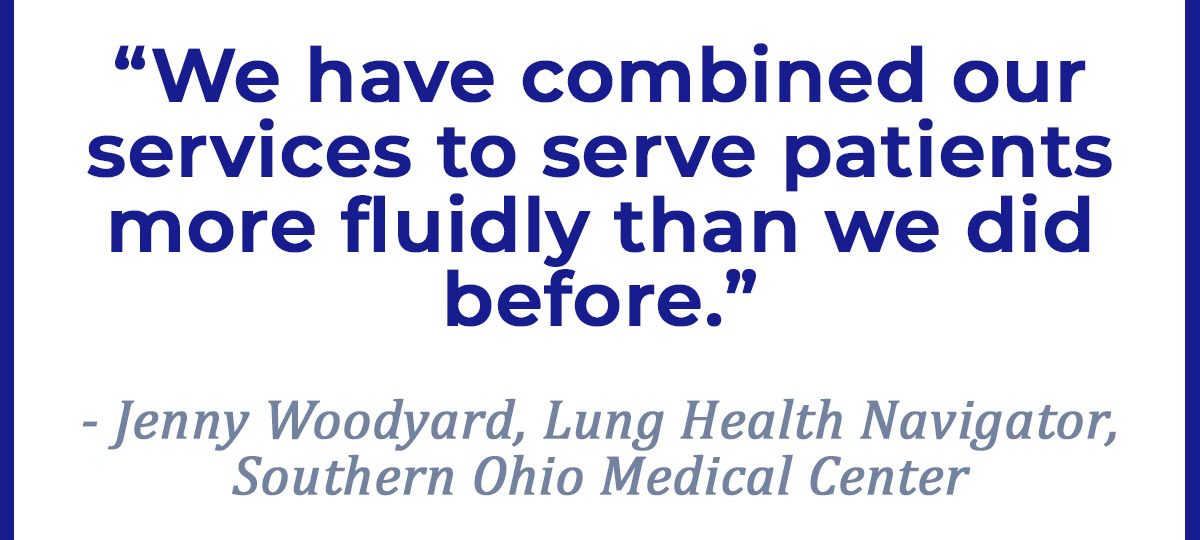Portsmouth, OH, and the surrounding region has a disproportionately high number of people diagnosed with lung cancer. The screening rate at Southern Ohio Medical Center (SOMC) is 12.28 cases per 1,000. The national average: 2.61.
It’s a community in stark need of great medical care. Fortunately, the people there are in luck.
SOMC has risen to meet the challenge, integrating lung cancer care from screening to treatment, and in the process earning GO2 for Lung Cancer’s designation of Care Continuum Center of Excellence (CCCOE). The designation recognizes community hospitals that treat lung cancer “through a coordinated, multidisciplinary, and patient-centric approach.”
Here are three reasons this approach works—for SOMC and for community hospitals across the United States.
1. Improved internal coordination.

Even before Southern Ohio Medical Center achieved its CCCOE designation, it was already certified as a Screening Center of Excellence. It also had in place the core components of a first-rate lung cancer treatment program. What was missing? Genuinely integrated care.
“We could have checked the boxes and said, ‘We have radiology. We have pulmonology. We have medical oncology. We’ve got the boxes,” said Wendi Waugh, administrative director of SOMC’s Cancer Services and Community Health & Wellness. “But so what? You have to talk about integration.” SOMC created a lung health leadership team to integrate lung cancer care that includes representatives from all the key medical departments along with a representative from community relations. The lung health leadership team meets monthly to talk through challenges and ensure continuity of care.
2. Support for patients across the care continuum.
While patients don’t see the lung health leadership team, they benefit every day from the way the departments work together behind the scenes to get tests scheduled, images read and tests processed, and care coordinated across appointment and providers. Jenny Woodyard, who runs the lung navigation program, explained that her navigation team gets deeply involved with patients both at the screening center and those identified through SOMC’s pulmonary incidental nodule program. “Patients are going through a hard time,” she said, “and we try to make it as seamless as can be.”
3. A process for continuous improvement.
“We are a community hospital focused on serving the community,” said Waugh. “To do that, we always have to look for ‘a better way.’ We constantly strive to be a leader in the industry and find better ways to ensure to serve.”
Becoming a Care Continuum Center of Excellence gave SOMC a new opportunity to examine how the hospital provided care to lung patients. But it was a review rooted in what the hospital does best: using metrics to measure and improve upon. The group measured the time from an abnormal imaging test to the time a diagnosis was generated; they also measured the time it took from a positive diagnosis to the beginning of the treatment course. Both measures served as a surrogate for finding gaps in any of the multiple modalities or processes that could delay these metrics. Now the lung health leadership team examines these metrics on a routine basis.
COEs and other lung cancer healthcare facilities will share best practices at the upcoming COE Summit October 29 and 30. Stay tuned for additional information.

Leave A Comment